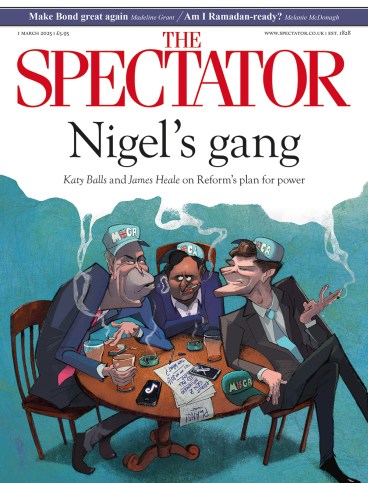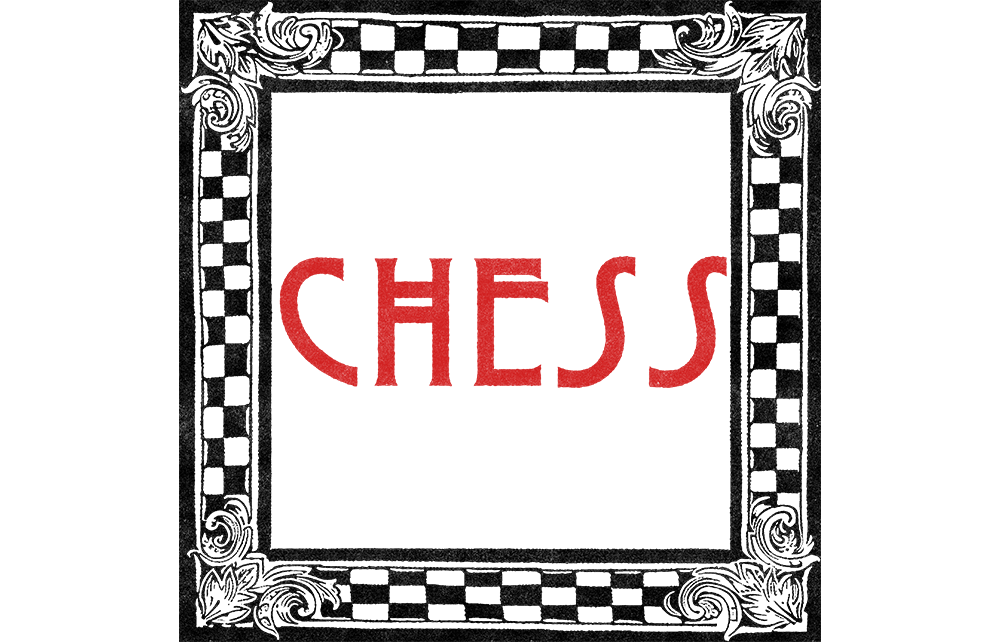
Forty minutes, two problems to solve. Earlier this month I was seated in an examination hall at Harrow school in London, taking part in the final of the Winton British Chess Solving Championship. This was the second solving challenge of the day: two ‘mate in 3’ problems. The first (see the puzzle below) was a beauty and I was delighted to crack it within ten minutes. So far so good, and I had half an hour left to tackle the second.
That’s where I got stuck. For one thing, the irrational position (see diagram below) made me dizzy. Composed by Aleksandr Feoktistov in 1969, the task is for White to play and give mate in three moves or fewer. Black’s king is immobilised in the centre, and there are countless ways to threaten mate on the next move, but three moves is a tough constraint to meet, given the range of defensive resources. For example, 1 Nxg4 threatens mate with Ng4-e3, and then 1…Rxg4 2 Qxg4 N1e2 (to prevent Qg4-d4#) 3 Rd6+ Kc5 4 Rbc6 mate is four moves – that’s one too many.

When solving a chess problem, for every eureka moment there are a dozen dead ends. I tried unsubtle moves, like 1 Qf6, (to threaten Qf6-e5 mate), but the king just legs it: 1…Ke4. In composed problems an inspired ‘waiting move’ can be a valid approach, so I looked at mysterious moves, like 1 Qc2 or 1 Bh8, hoping the secret would soon reveal itself. Those went on the scrapheap too: in each case 1…Rc4 is one of several adequate replies. Back to the crude stuff: 1 Nxg3 (to threaten Qg6-g5+ and mate next move), but there is no mate after 1…Ne4. The slippery king eluded all my attempts at capture.
Another of my primitive ideas was 1 Nxg8, to threaten Ng8-e7 mate, but Black can play 1…e5, creating an escape square on d4. The correct answer is an elegant refinement of that: 1 Rc7! threatens 2 Nxg8 followed by 3 Ng8-e7 mate, whereupon …e6-e5 can be met by Rb6-d6 mate. Black has various defensive tries, but they all fall short, e.g:
– 1…Rc4 2 Rd7+ Kc5 3 Bf8#
– 1…Rd4 2 Nf6+ Ke5 3 Qg5#
– 1…Re4 2 Qg5+ e5 3 Qd8#
– 1…Nd1 2 Rxb5+ Kd6 3 Be5#
– 1…Nd3 2 Qxd3+ Rd4 3 Qxd4#.
– 1…Bf7 2 Nxf7 followed by 3 Qxe6# or 3 Rd6#
In a chess-solving contest, the marking is merciless, and there are no points for finding wrong moves. For the most part, you either find the right idea or you don’t. Half an hour of spinning my wheels produced a catalogue of duff ideas. Nul points.
Even by the standards of a solving competition, this problem was unusually difficult, and only two solvers received full marks for it. One was Eddy Van Beers, a grandmaster of competitive solving from Belgium, who achieved the highest overall score from the six rounds that day. (The event welcomed participants from overseas, though they were not eligible to win the British title.) The other was David Hodge, the reigning British Solving Champion, who repeated his success to earn his fourth British title. He finished ahead of Jonathan Mestel – also a many-time British Solving Champion, as well as a grandmaster of over-the-board chess. I was happy to finish in third place among the Brits.






Comments